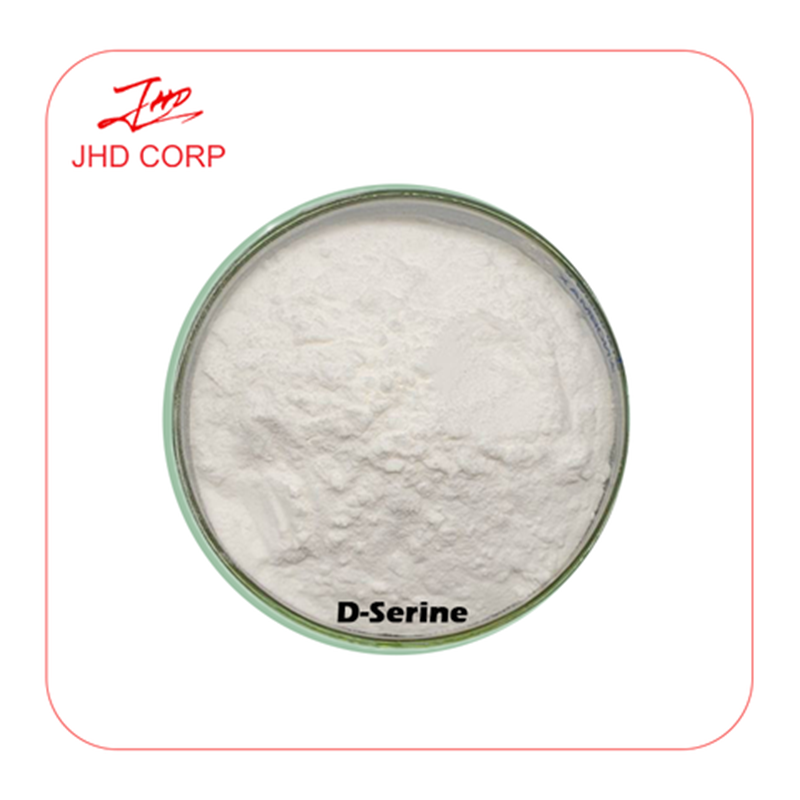Welcome to JHD Nutrasource!
Shop
D-Serine Powder
D-Serine is a white crystalline powder, the D-enantiomer of L-serine. While L-serine is involved in protein synthesis, lipid metabolism, and the synthesis of other important molecules, D-Serine has specialized functions, primarily in the central nervous system. It is an endogenous co-agonist at N-methyl-D-aspartate (NMDA) receptors, playing a crucial role in neurotransmission.
Description
| Product Name | D-Serine |
| Appearance | White Powder |
| Specification | / |
| Test Method | HPLC |
| CAS No | 312-84-5 |
| MF | C3H7NO3 |
| Certificate | KOSHER/HALAL/ISO/CGMP/USDAORGANIC |
Functions
- Neurotransmitter modulation: D-Serine acts as a co-agonist with glutamate at NMDA receptors, which are key players in synaptic plasticity, learning, and memory formation. By binding to the glycine-binding site on NMDA receptors, D-Serine enhances the receptor’s sensitivity to glutamate, facilitating the opening of ion channels and the influx of calcium ions into neurons. This process is essential for long-term potentiation (LTP), a cellular mechanism underlying learning and memory, as well as for synaptic development and remodeling.
- Myelination support: During the development of the nervous system, D-Serine may contribute to myelination, the process of forming myelin sheaths around nerve fibers. Myelin sheaths insulate nerve fibers, increasing the speed and efficiency of nerve impulse transmission. By regulating the differentiation and maturation of oligodendrocytes, the cells responsible for myelination, D-Serine helps ensure proper neural circuit function and communication.
- Neurological disorder involvement: Dysregulation of D-Serine levels and NMDA receptor function has been associated with several neurological disorders. In schizophrenia, for example, reduced D-Serine levels in the brain may contribute to the cognitive and behavioral symptoms of the disease. Research is ongoing to explore D-Serine-based therapies for treating such disorders by restoring normal NMDA receptor function.
Applications
- Neurological research: D-Serine is widely used in neuroscience research to study the mechanisms of NMDA receptor-mediated neurotransmission, synaptic plasticity, and the pathophysiology of neurological disorders. It serves as a valuable tool for understanding the complex processes involved in brain function and developing potential therapeutic strategies.
- Pharmaceutical development: Given its role in NMDA receptor regulation, D-Serine is being investigated as a potential treatment for various neurological and psychiatric conditions, including schizophrenia, depression, Alzheimer’s disease, and stroke. Clinical trials are exploring the use of D-Serine supplements or medications to modulate NMDA receptor activity and improve symptoms in patients.
- Biomedical research: In addition to neuroscience, D-Serine is also used in broader biomedical research to study its effects on cell signaling, development, and metabolism in other tissues and organisms. Its unique properties make it an interesting target for understanding fundamental biological processes.

